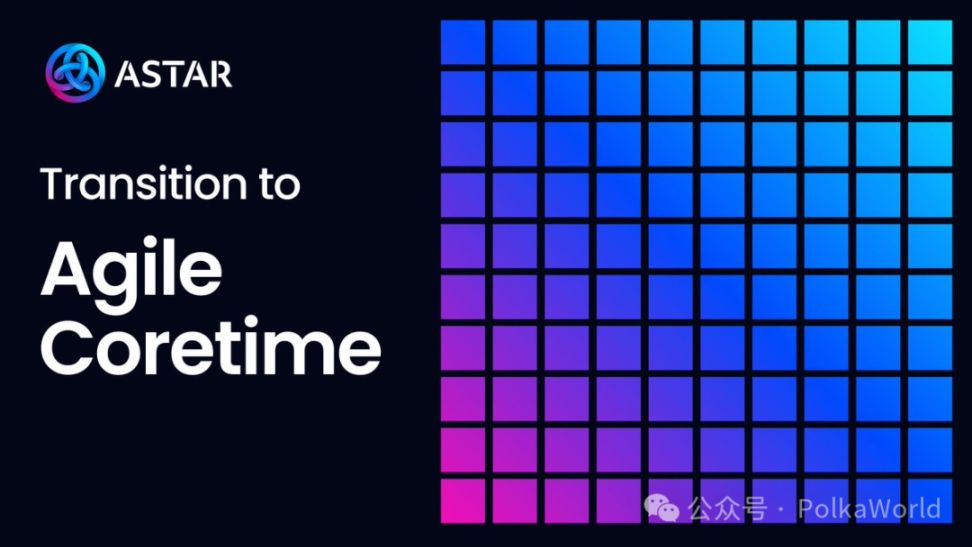Polkadot Weekly Report | DOT inflation proposal is now open for on-chain voting! Polygon has integrated Hyperbridge on the testnet!

Polkadot
Gavin Wood announced he will return as Parity CEO at the end of August! Co-founder Björn Wagner steps down after serving as CEO for three years.
- Reason for return: The architectural foundation is set, the market timing is right, and by combining vision and execution from the CEO position, the next stage of growth can be accelerated.
- Team operations: Daily operations remain unchanged, projects and plans will proceed as scheduled, but a new chapter is about to begin.
- Invitation to builders: Whether launching a new chain, integrating large-scale Web applications, or building foundational tools, Polkadot is the best launch platform, and Parity will fuel these efforts.
“Breaking News! Gavin Wood announces return to the CEO position, leading Parity once again!”

💥 On-chain WFC voting for DOT inflation has begun! Three major proposals have entered the critical voting stage:
First proposal: Hard Pressure
Total supply cap: 2.1 billions DOT
Every 2 years, the remaining issuable amount decreases by 13.14%
On March 14, 2026, inflation will drop directly to 3.11%, with a staking yield of 5.6%
Voting link:
Second proposal: Growth Pressure
Total supply cap: 2.1 billions DOT
Inflation decreases by 33% every two years, staking rewards decrease by 50%
After the first adjustment on March 14, 2026, inflation will be 5.03%, staking yield about 3.9%, and the surplus (about 34 millions DOT) will be deposited into an incentive pool to encourage parachains.
Voting link:
Third proposal: Soft Pressure
Total supply cap: 3.14 billions DOT
Each time, the issuance for the previous cycle is reduced by 13.14%
On March 14, 2026, inflation will drop to 5.5%, with a staking yield of 10.6%
Voting link:
Learn more:
In July, the Polkadot Deployment Portal (PDP) received a series of significant updates, further lowering the barrier for developers to deploy rollups, making building more efficient and secure. Three core upgrades:
✅ Kubernetes support: All rollup infrastructure now runs by default in a containerized, production-grade environment, enabling on-demand scaling, flexible customization, and easy integration of additional services.
✅ Visualized runtime upgrades: Preview logic changes, pallet additions/removals, and configuration updates before going live, with rollback support to reduce upgrade risks.
✅ Coretime auto-renewal: Automatically keeps the chain online, avoiding downtime due to blockspace expiration, with reminder notifications included.
These improvements significantly reduce configuration friction, boost upgrade confidence, and ensure high availability. Developers can spend more time on product building rather than tedious operations and maintenance.
Whether you want to deploy a gaming rollup, launch a DeFi protocol, or test runtime logic, PDP can be your best starting point, providing a one-stop solution from testnet to production.
The new PDP Beta is now live and will continue to iterate, helping more multi-chain developers get started efficiently. See more here:

Harbor Industrial Capital (HIC) is leveraging capital to drive application adoption and activate on-chain liquidity, sharing Polkadot’s story with global investors. In its first fund, HIC invested in star projects such as peaq, Mythical Games, Mandala, and Xcavate. With the Web3 Foundation as the first LP in its second fund, HIC will focus more on VC investments and asset operations (node deployment, liquidity pools, etc.), with a focus on the Asian market.
HIC believes Polkadot is on the eve of a “Cambrian explosion”—the Hub is about to launch, the JAM upgrade is yet to be priced in, and sectors like RWA, gaming, and government services have huge potential. HIC also calls for the ecosystem funding model to shift from “grants” to “investment,” enabling commercial projects to accelerate growth under capital-driven incentives.
Learn more in PolkaWorld’s latest article: “HIC Second Fund: Bringing Capital, Applications, and Liquidity Together into Polkadot!”

Perhaps soon, Polkadot OpenGov will be filled with all kinds of Bounties 👀
More and more decisions in Polkadot are shifting from public referenda to expert-led bounty mechanisms:
• Marketing bounties → Events and sponsorships
• Meetup bounties → Global community events
• Event bounties → Ecosystem conferences
• DeFi integration bounties → Exchanges, liquidity, custody
The next step may be investment bounties, replacing non-returnable treasury grants, so that funds can be directed to quality projects and generate returns! Learn more: “Who’s Doubling Down on Polkadot? HIC Announces New Round of Investment, Bifrost × Hydration Drives DeFi Institutionalization Against the Trend!”
This week, the stablecoin sector saw major shocks: Circle announced the launch of the native USDC chain Arc, Stripe teamed up with Paradigm to develop the Tempo chain, and Tether is accelerating the rollout of Plasma / Stable! Gavin Wood once predicted that stablecoin issuers would become “bank-like,” and at the July Web3 Summit stated: Polkadot will issue a fully decentralized native stablecoin, collateralized by DOT and initiated by a treasury proposal. U.S. stablecoin legislation will accelerate differentiation. Your choice determines whether you are a “customer” on the chain or a “participant” with autonomy. “Stablecoin Issuers Are Becoming ‘Bank-like,’ Polkadot Plans to Launch a True Web3 Stablecoin!”
Polkadot announces renewed sponsorship of Coinfest Asia 2025! Get your tickets now 👉

This week, we share a perspective from a Polkadot community member! The official Polkadot Twitter also retweeted this message—let’s take a look~
What truly matters in blockchain is not simply “adding more capacity,” but changing how blockspace is used, just as cloud computing replaced server racks. The key is not how much capacity there is, but how it is scheduled: allocating blockspace to those who truly need it, when they need it, rather than paying for idle resources.
Currently, so-called economic security is mostly “bought at a premium.” To ensure validators keep producing blocks, rewards are paid even if blocks are empty—this is essentially wasteful. Most public chains operate this way now. The throughput of most chains is fixed/static:
- Demand surges → Transaction fees soar → Users are forced out
- During the 2022 NFT craze, Ethereum transaction fees reached as high as $3,000 per transaction
- The same happened during Bitcoin’s Ordinals boom
- Old versions of Solana simply “froze”
Cloud computing solved similar problems long ago: with elastic scaling, capacity expands within minutes during demand surges and contracts when not needed. Some chains are moving in this direction:
- Solana: Dynamic block limits + QUIC/Agave to handle traffic spikes
- Avalanche subnets: Open new network space as needed
- NEAR Nightshade: Add shards as traffic increases
- Ethereum L2: Batch more transactions or improve compression
Polkadot’s solution is execution cores: blockspace units that can be reallocated in real time.
- Agile Coretime: Cores can be purchased in advance or rented on demand
- Elastic Scaling: Acquire more cores during high demand, use fewer during quiet periods
- You can even temporarily launch a chain for a weekend event
The principle is the same as cloud computing, only this time applied to blockchain.
The ultimate question is: which design will enable the crypto world to truly scale like the Internet?
See the original article:
Ecosystem Projects
Bifrost and Hydration are bringing institutional users to Polkadot! These institutional users are also very interested in how to configure DOT in Bifrost or Hydration! Next, when Polkadot Hub goes live, the pre-compile feature will also be implemented, attracting more developers to quickly deliver protocol clients and on-chain automated applications. This will further stimulate liquidity on the Polkadot chain and provide users with more choices!
Learn more in PolkaWorld’s article: “Who’s Doubling Down on Polkadot? HIC Announces New Round of Investment, Bifrost × Hydration Drives DeFi Institutionalization Against the Trend!”
In the DePIN sector, peaq leads by a wide margin in attention/valuation ratio compared to other projects! And peaq is built on the Polkadot network!

Astar has officially bid farewell to the parachain slot auction and enabled Polkadot’s Agile Coretime feature, achieving “on-demand compute power purchases”—no more locking DOT for years in advance, and no more worrying about resource waste. Highlights of this upgrade:
- Completely abolishes the slot leasing system, eliminating cyclical auction pressure
- Compute power is purchased as needed, with lower costs
- DOT reserves are centrally planned and spent as needed by the on-chain governance committee
- The entire process is transparently executed on-chain, accountable to token holders
This means Astar has entered a new stage of sustainable scaling: it can now develop stably and long-term without relying on one-off crowdloans. Astar says more breakthrough upgrades are coming, making the network more flexible and efficient, and continuously creating value for token holders.

Polygon has integrated Hyperbridge on its testnet! This integration enables seamless and secure data and value exchange between Polygon and the broader Web3 ecosystem—no intermediaries, no trust assumptions, relying solely on on-chain proofs to ensure robust and verifiable interoperability. Polygon mainnet will soon integrate Hyperbridge!

Disclaimer: The content of this article solely reflects the author's opinion and does not represent the platform in any capacity. This article is not intended to serve as a reference for making investment decisions.
You may also like


Polkadot Hub + PDP: Rewrite Rollup Deployment Rules to Accelerate Ecosystem Explosion!

A new paradigm beyond EVM chains: Polkadot smart contract platform to launch in October!

